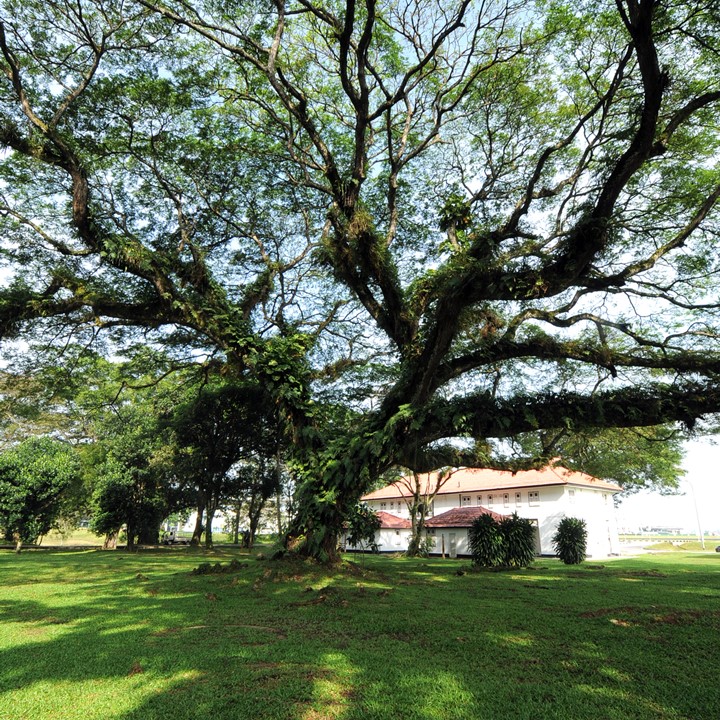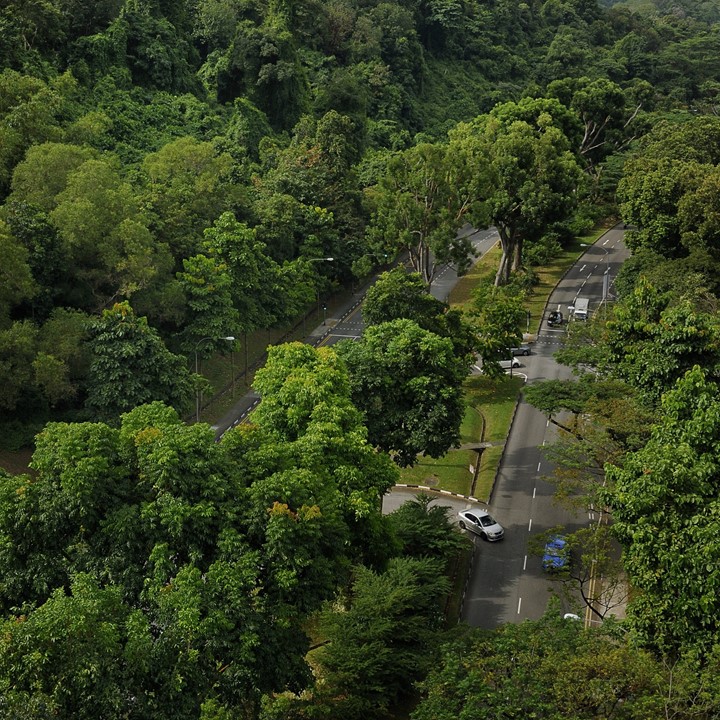Benefits of Trees
Find out why trees are so important to people and cities.
Trees provide us with a multitude of environmental, social and economic benefits, and are an important foundation for a liveable and sustainable city. Here are some reasons why trees are beneficial to society, and why we should continue to plant and care for them for generations to come.

Trees improve our urban environment.
Trees help to reduce ambient temperatures in a city by transpiring and providing shade. They are also known to improve both air and water quality by absorbing pollutants, intercepting particulates, releasing oxygen, reducing ozone levels and reducing soil erosion.
Trees are an asset for stormwater management in a city. Urbanised areas tend to experience a large amount of stormwater runoff due to large areas of impermeable road and building surfaces. By capturing some of the falling rain with their leaves and increasing the capacity of soil to absorb rainwater, trees reduce the strain on our stormwater drainage network.

Trees help us fight climate change.
Global climate change is caused by an increase in greenhouse gases in our atmosphere, and results in long-term weather changes such as warmer temperatures, rising sea levels and more extreme weather events. Our country has been experiencing an increase in average temperatures as well as average sea levels for the past few decades, and climate change models indicate that this will continue well ahead into the future.
Trees reduce greenhouse gases when they take in carbon dioxide from the atmosphere and store it as wood. This process, known as carbon sequestration, is essential in our long-term fight against climate change and its impact on our country.

Trees increase urban biodiversity.
Urbanisation usually leads to losses in a city’s native plant and animal communities. Trees can mitigate this loss of biodiversity by providing habitats for certain groups of native wildlife. Birds often rear their young and hide from predators in the shelter of trees. The flowers, fruits and leaves of some trees also provide food for various native birds and butterflies. The large branches of trees support a variety of native climbers, ferns and orchids. Finally, dense tree planting along our roads form green corridors, allowing native wildlife to easier passage from one forest patch to another, while increasing our chances of seeing them near our homes!

Trees enhance community well-being.
Trees bring people together. By providing a cool micro-climate in urban parks, trees encourage greater usage of these public green spaces, where the community can come together to bond and enjoy recreational activities. This reduces social isolation and improves social connections in a city.
Trees also improve our overall well-being. Studies show that exposure to greenery improves the attention levels and cognitive functioning of schooling children. For office workers, a green view from one’s window provides micro-restorative opportunities, which has been shown by research to contribute to greater effectiveness and satisfaction at work.

Trees benefit our health.
The biophilia hypothesis is a concept that suggests humans are inclined to seek connections with nature, and other living things. This is supported by a growing body of research which indicates that urban trees and green spaces are beneficial to our physical and mental health.
Parks and roads which are shaded by trees provide a conducive environment that encourages active lifestyles, such as physical exercise and active transportation (e.g. walking, cycling). This, in turn, has been shown to reduce the risk of cardiovascular disease and type 2 diabetes Greater exposure to urban greenery can also lead to lower rates of depression, reduced stress, lower rates of Attention Deficit Hyperactivity Disorder (ADHD) in children, and an improved overall sense of well-being.
Trees and other greenery in a hospital setting can help patients recover faster from their physical ailments. In addition, trees are a core element in therapeutic gardens, which are specially designed to improve the mental well-being of the elderly and people with dementia. In a therapeutic garden, trees can be used to provide respite from the heat, and to evoke the senses (e.g. colour, texture, smell) that provide emotional comfort and stimulate the minds of its users.

Trees aid our economy.
Studies have shown that commercial locations with more trees experience better foot traffic and retail volume. Property developers often use the allure of greenery provided by trees to market their properties, and in some cases, the presence of trees can increase property value.
By lowering ambient temperatures, trees also help businesses save electricity by reducing the use of air conditioning. In addition, trees provide ecosystem services, such as stormwater interception, which would otherwise require even greater infrastructural investments.
Finally, the tropical tree-lined streets of Singapore give us a distinctive global identity as a biophilic City in a Garden.

